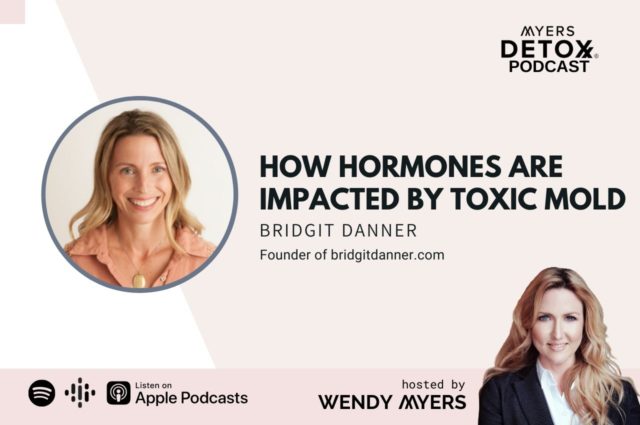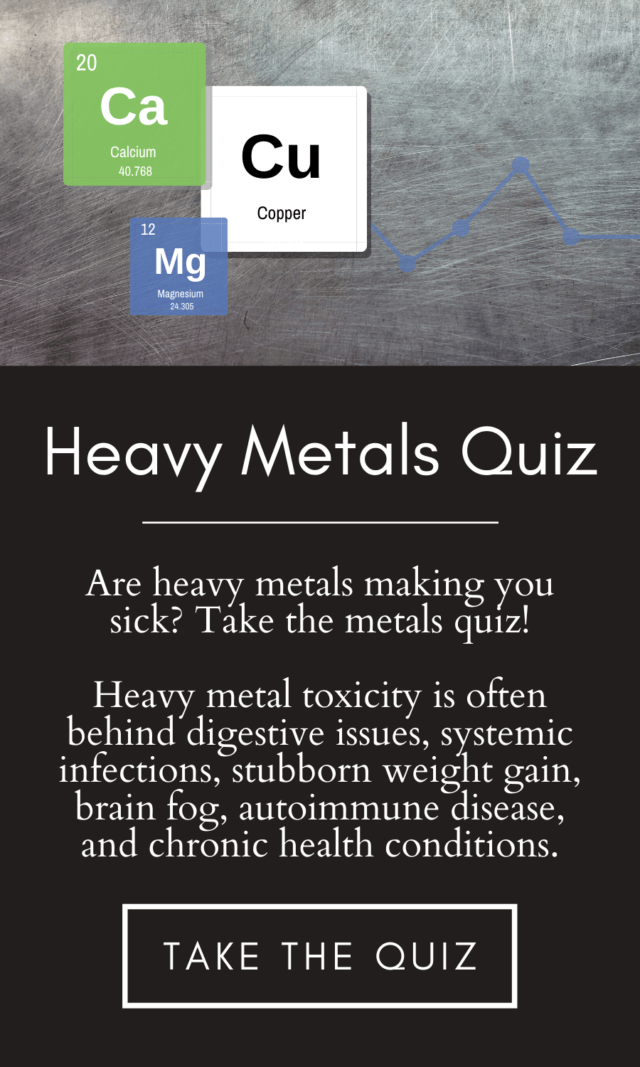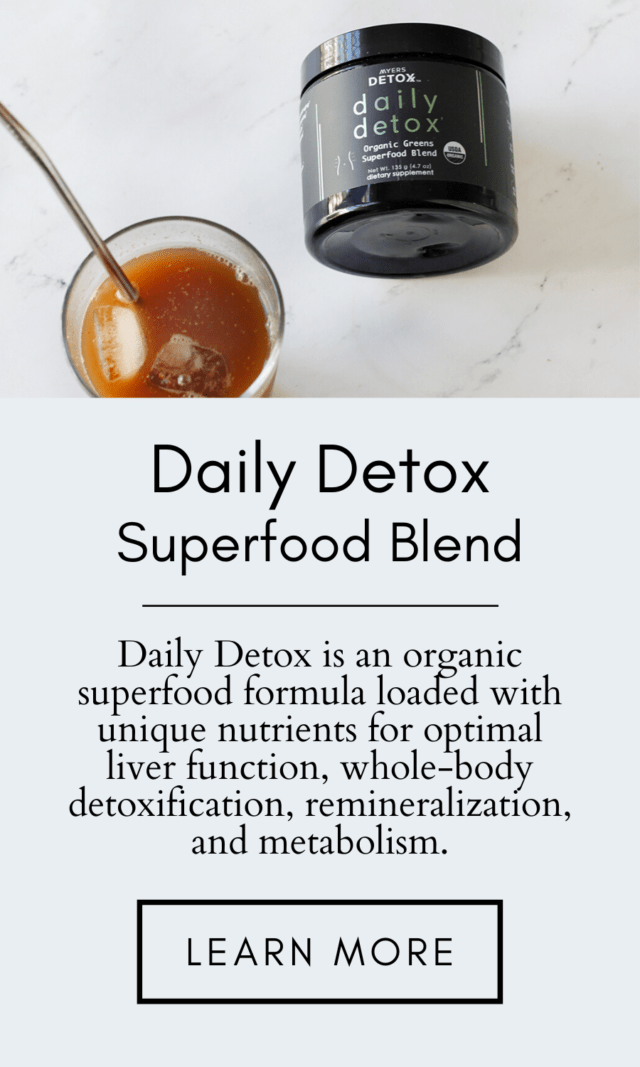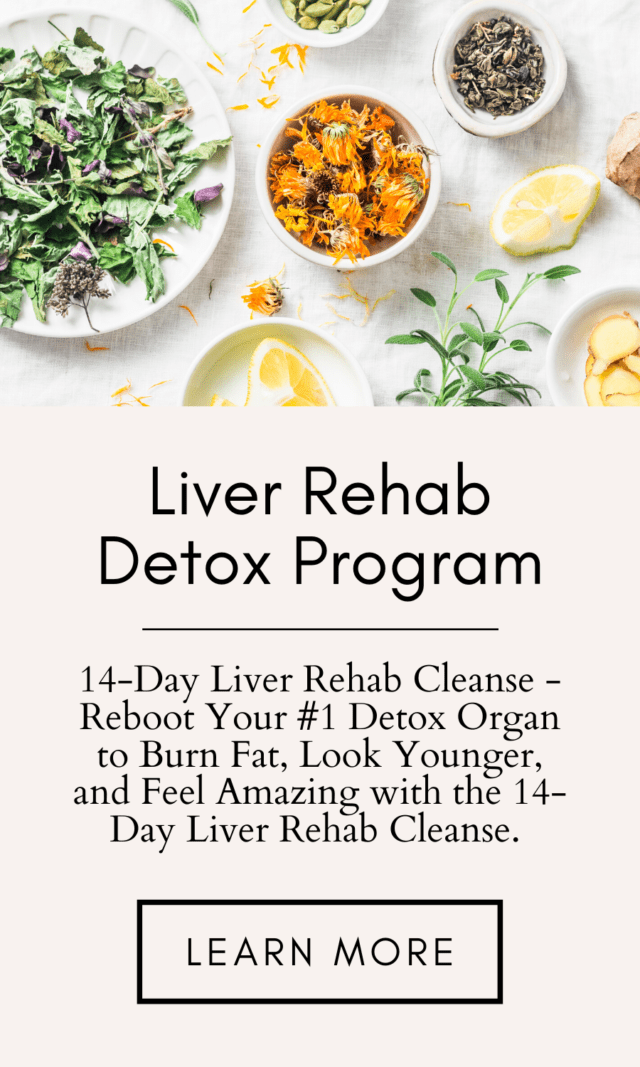Transcript #423 How Hormones are Impacted by Toxic Mold with Bridgit Danner

Listen
Listen to this podcast or watch the video. CLICK HERE
Transcript
Download PDF
Click to jump to a section!
- Find out what’s in store on this Myers Detox Podcast with Bridgit Danner, who joins the show to talk about everything related to toxic mold, what it is, what it does to the body, and how to address mold toxicity. Bridgit also goes over how toxic mold affects your hormones and weight gain, and the best ways to detox mold from your body. If some of the symptoms your hear in this episode sound like yours, it might be time to look at mold!
- Find out what caused Bridgit to become passionate about educating people about mold.
- Learn what causes people to be more affects by toxic mold than others.
- Find out how mold gets into your body.
- Learn how Bridgit tests people for mold exposure.
- Find out what the symptoms of mold toxicity are.
- Learn how toxic mold can affect your hormones and your hormone balance.
- Find out how mold can cause you to have weight gain, or persistent weight gain.
- Find out how to can address toxic mold in your body.
- Find out what supplements are great to help your body detox toxic mold.
- Learn how mold forms in your home and some of the ways you can go about addressing it.
- Learn more about Bridgits upcoming book The Ultimate Toxic Mold Recovery Guide
- Find out about where someone who has mold sensitivity should live.
- You can learn more about Bridgit and her Functional Detox Products at www.bridgitdanner.com
Wendy Myers: Hi everyone. I’m Wendy Myers and welcome to the Myers Detox Podcast. Today we have a great show. We have Bridgit Danner on the show, talking about toxic mold. She also has a new book called The Ultimate Toxic Mold Recovery Guide. We’re going to be talking about everything related to mold. What is toxic mold? What are the top supplements to address mold? What are some of the symptoms that you have when you potentially have mold toxicity? What does that look like? We’ll go into depth on how toxic mold affects your hormones and how it can affect weight gain. We talk about where mold can grow in your home, what to look for, how to test for mold and just everything related to mold. If you’re concerned about your symptoms and you haven’t been able to pinpoint what is going on with you, why you can’t lose weight, why your hormones are out of whack, why you’re doing everything right with your health, your diet, exercise, et cetera, and you’re still having a lot of symptoms or even very severe symptoms like chronic fatigue, you will want to listen to this show.
Wendy Myers: Our guest today, Bridgit Danner, was working as an acupuncturist in Portland, Oregon when her health started to deteriorate. She learned a lot. She tried a lot of things, even completed a functional health coaching program in the effort to heal herself. Although several things kind of helped, nothing helped completely. She hit rock bottom in 2014. Soon after, she discovered toxic mold in her 100 year old home and began a long journey of home and body repair from toxic mold. Bridgit got into the natural medicine field in 2000 as a young environmentalist. She practiced as an acupuncturist and integrative clinic owner for 13 years, performing over 10,000 sessions with clients before transitioning into the online space, as a functional health coach and educator. She loves to teach people about everything related to detox, functional living and toxic mold illness at her website, BridgitDanner.com. She’s also the founder of the line of detox supplements called Functional Detox Products. Her Instagram is @Bridgit.Danner. Like I said, you can learn more about Bridgit and her Functional Detox products at BridgitDanner.com. Bridgit, thank you so much for joining us.
Bridgit Danner: Hi, Wendy. Happy to be here.
Wendy Myers: Well, I wanted to have you come on and talk about your new book, which is about mold. I think it’s a really big problem and a lot of people aren’t made aware of it if they go to their doctor with symptoms. It’s a huge problem. Mold is everywhere and people are reacting to it. Let’s talk a little bit about how you got into mold and why you’re so passionate about educating people about this issue.
Bridgit Danner: Yeah, it’s funny. I feel like it’s so full circle for me. I got into natural medicine because I was an environmentalist from a young age and I was like, do I want to be an environmental lawyer? What do I want to do in the world and make an impact? I ended up going into natural medicine. I always thought, when you’re fantasizing as a student, I’m like, “Some day, I’ll have a clinic and I’ll also teach classes about recycling and protecting the environment.” Then I moved to Portland, Oregon, which is already very aware of all those things, which is fantastic. I basically was doing my Chinese medicine practice and learning about the body and all that. Meanwhile, I unwittingly moved into a moldy home. I did not know it, but I was just collecting more and more symptoms. I was really working on my health, cooking whole foods and I went gluten-free. I was doing all these things. My health was still just up and down, up and down.
Bridgit Danner: Then it really hit a bad, low point when it felt like nothing was working. Detox wasn’t working, IV therapy wasn’t working, nothing was working. Finally, a naturopathic clinic asked me, “Has anything changed in your home?” That was the first time the possibility of mold was discussed. We did have this musty basement and it had recently had some water intrusion, just a little bit, nothing I even really thought about until they asked. I went home and mentioned it to my husband at the time. He was like, “Oh, I think we should test. I’ve always kind of wondered.” That just opened up this whole Pandora’s box of issues with the house. Actually my symptoms got worse because we didn’t handle the house correctly.
Bridgit Danner: My symptoms at my worst, were, just to kind of highlight them. My eyes were twitching all the time. My short-term memory was gone. I was losing things. Probably my scariest moment was, I was so tired that I would just fantasize about not waking up in the morning. I just couldn’t imagine having to go through another day. These mold stories can be really dramatic, but it’s so important to uncover that source because you’re just going to get sicker and sicker. The good news is you can really restore your health. I’m sure you’ve seen it too with your clients, Wendy. You can have all these diagnoses and all this stuff going on, but if you stick with it you can really turn around your health, which is the good news.
Wendy Myers: Yes. Mold is everywhere. A lot of people have mold in their home. Not everyone reacts to it. A lot of people have mold in their environment. They live in humid environments. What is the difference between someone who reacts to it and someone that doesn’t?
Bridgit Danner: There’s a lot of factors. I think it gets a little oversimplified to genetics and especially one gene which has been talked about a lot, but there’s actually many genes involved in detoxification and how well you methylate. There’s one gene, HLADR, it helps you tag mycotoxins. Again, it’s just one component. I’ve seen people with the gene or without the gene be affected. It’s also the length of time of the exposure, the amount of the mold, underlying health conditions, underlying stress, EMF factors in the home and other toxins in the home. It can be that kind of bucket theory, you can only take so much, your body systems can only handle so much and then it’s going to start misfiring. Also our bile tends to recycle so mycotoxins from mold can recycle right back in, which is why I see some clients who’ve been out of a moldy home for a few years but they’re still testing positive. They’re just kind of hanging out in there, recirculating.
Wendy Myers: How does that work? You get exposed to a moldy environment, you can also be staying at someone’s home or a hotel room. I mean, I’ve been knocked out by mold in a hotel room for sure. The mold colonizes, the spores colonize, and how do you address it at that point? I know it depends on the type of mold, but what’s going on with that?
Bridgit Danner: They just like a moist environment, so potentially they can colonize in your sinuses or your gut, for sure. It’s really speculated. They can be everywhere, in your lungs or even into bone, which is crazy. That may be more the toxins in the spores. I’m probably not as much of an expert on colonization, but I am definitely an expert on different ways to irrigate your sinuses and different treatments for your gut. I think some of the testing isn’t as conclusive on colonization, it is more conclusive on just whether or not you have mycotoxins. For instance, I test the gut and there’s some markers on the O test that supposedly indicate if you have colonization. In my clients, I never see it. However, our friend Evan Brand, he’s like, “I see it constantly.”
Bridgit Danner: I don’t know why that is. I think we just proceed with our best treatments that we know of, for mold. Basically, I think it’s partly that colonization and partly just that bio recycling, things just aren’t able to exit the body, which is why it’s a good idea to use binders like you do, Wendy. I was shocked the first couple times I saw this, where there wasn’t a recent exposure, but there were still mycotoxins. It goes to show that unfortunately, sometimes the body cannot deal with it on its own. Maybe for some people it does, some people just take some time, take a year out in nature and then their labs would be clear, but other people, it doesn’t seem to clear so well without actual intervention.
Wendy Myers: The mycotoxins are the mold poop. It’s the toxins that the molds are releasing and kind of their metabolism and their life cycle. Some people just can’t metabolize it. They can’t get rid of it. What kind of tests do you do for mold? How do you find out what type of mold you have?
Bridgit Danner: We use a urine test. I think there are a couple different kinds of blood tests, but I think the most popular tests are urine tests, which make it nice because you can do it at home. They’re usually a test for the actual mycotoxins. I think there’s some more blood tests for mold allergies. I like the mycotoxin test. They will check for some categories of mycotoxins or categories of mold that they come from. I do encourage people not to dwell on the type too much, because one urine sample is one sample. If you took a sample every day for a month, you’re probably going to see different things come up. Molds have their own life cycles too, in the home and maybe even potentially in your body. Urine is just a waste product and so it’s going to show different things. I like to see it as a practitioner, because if I know, okay, you have mycotoxins in your body, yes, they could be contributing to your symptoms. Let’s go from there and see how you respond.
Wendy Myers: What are those symptoms? You mentioned some of them, but what are some other symptoms that might help people connect their symptoms with potentially being mold toxic?
Bridgit Danner: There’s so many, that’s why I am always in functional medicine, it’s tough, because things can overlap. I would say brain fog and fatigue are the top two I would see, followed by a giant smorgasbord of other things. This could be skin rashes, ADHD, rage, depression, anxiety or weight gain. I mentioned to you before we came on, even things like PMS, erectile dysfunction, it can really affect your hormones. Food sensitivities are a big one, that came up a lot in our masterclass. Just constantly feeling like you don’t tolerate foods and you’re always working on your gut. Mold is so disruptive to the gut. Even just chronic gut stuff that you can’t seem to get rid of, I would look for mold.
Wendy Myers: Let’s wind up on hormones. I think this is something that hasn’t really been touched on or it hasn’t really been talked about a lot, how does mold interfere with your hormones and your hormone balance?
Bridgit Danner: A lot of ways, and this was like a big light bulb that came on for me in my own story. I think this part is fascinating. A lot of it is inhaling, right? We’re breathing in what’s in the air, and that information goes right to the brain. It’s like sensory information, plus it can contain these mycotoxins, it can travel basically anywhere. They can cross through cell membranes, they can go into your brain, they break down the blood brain barrier. They go right in there and they mess up your limbic system and your brain, which we can talk about. But also right there is your hypothalamic pituitary axis, which becomes inflamed and now it can’t work correctly. One thing that can happen in your hormones is low production, which I think was happening to me. I just had upon testing, very low levels of hormones. That’s why I was having this breakthrough bleeding, but mold can also be estrogenic like other toxins for women or men. It just depends on your own genetics and the way your body responds.
Bridgit Danner: You can be showing signs of hyper estrogen, which can make you gain weight, having breast tenderness and having clotty periods. Then fat tissue also can make more estrogen so you could potentially become very estrogen-dominant, then your gut’s disrupted. There’s another way you cannot be detoxing estrogen correctly, or other things. Then cells are inflamed so hormone messages aren’t getting received into the cell. Potentially the liver is burdened, which is another way we’re trying to detox hormones. It’s just such a long list. The thyroid is very sensitive to mold. There’s a lot of cases of Hashimoto’s related to it. That’s one of my little campaigns lately. I think a lot of these chronic hormonal problems could have a mold cause and people, unfortunately, aren’t really looking for it.
Wendy Myers: Let’s talk about weight gain also. I think that’s something a lot of people struggle with. A lot of women struggle with it and the last thing they would be thinking of is mold. Talk about that.
Bridgit Danner: Some people report very sudden weight gain or very stubborn weight gain. I have a friend, I think she is a friend of yours as well. I won’t list her name, but she was doing a lot of things right like a healthy diet and everything, but she gained 40 or 50 pounds and couldn’t take it off. I know a lot of people have a similar story. I always say, and you probably agree, Wendy, it’s like, if you feel like you’re doing all these things and it’s not working, think about toxins. They could be playing a part. For one thing, our body can store toxins and not be able to deal with them, so that can make for extra weight. It can affect your insulin reception because as I said earlier, it can inflame those cells. You can become kind of insulin-resistant. It affects your leptin and ghrelin, I always forget, is leptin the one that makes you feel full?
Wendy Myers: Yes. Ghrelin is the one that makes you want to eat.
Bridgit Danner: Okay, I think it affects the leptin more. It can potentially make you not feel full. That’s one more way. I think for me, when I look back on my story, I was just so exhausted that I was turning to carbs more. You need that quick hit of energy. Luckily, I was already a health coach. I didn’t go that overboard, but there’s one more way you could be just craving carbs for energy, but then you’re not burning them as well. Plus you don’t have any energy to exercise so there’s a lot of ways that it could affect your weight. It could also go the other way because your brain is inflamed, so you’re nauseous and you don’t have an appetite. You have all these food sensitivities. I think it could go either way potentially.
Wendy Myers: Okay, great. Let’s talk about some of the solutions. What are some of the ways that you can address the mold in your body and also in your home? We’ll talk about that in a minute. Let’s talk about how to address it in your body first.
Bridgit Danner: I’ve learned enough about the home because I know people are always going to have questions and it is important, but my personal specialty is more in the body. For me, when I was at my sickest, what helped me the most were mostly things that moved the lymph and facilitated that detox. I loved doing saunas and dry brushing. They were two things I did fairly consistently first. Then, later on I learned about coffee enemas and I started doing those. That helped me a ton. I like using a rebounder and I got lymphatic massages. Still getting some exercise, even if it’s just walking outside is really important. That would help me.
Bridgit Danner: I’m a big fan of just getting outside for your health in general, Epsom salt baths, you can do red light therapy and you can do cryotherapy. I owned an oxygen chamber for a year. I was experimenting with that and mouth taping was something I found really helpful in my particular case. I put like 30 different things in my book. I think I had to cut some of them, but I put a lot of techniques in my book. I really believe in physical medicine and especially in the word detox, I think it helps a ton. I’m sure you have the same experience, right Wendy?
Wendy Myers: Oh, absolutely. You have to throw everything at it you can, every solution possible. What about some of the supplements? What are some of the top supplements that people can take to address mold?
Bridgit Danner: For the sake of organizing a book, I had to kind of pick some favorites. There were so many supplements out there, but I decided my top five were binders, which we discussed a bit, electrolytes, broccoli seeds and sprouts, CoQ10 and glutathione.
Wendy Myers: Okay, great. Then can you talk about each one of those briefly? What kind of binder should people take for mold?
Bridgit Danner: There’s been some interesting research around certain things that bind certain mycotoxins, which is interesting, but a little like testing the body. I mean, I think it’s kind of cool to use one that matches your mycotoxin, but keep in mind that you could have other ones that just haven’t come up on a test. Either binder rotation or a blended binder, I think are usually the best approaches. Some binders you may not tolerate that well, and others you tolerate very well. I think you’ve got one Wendy that’s a pectin, that’s more gentle. It’s a single ingredient. If you’re very supplement sensitive, you might want to do something like that. We use a lot of combo binders that have got a lot of different binders in them. It’s kind of catching a lot of things, potentially heavy metals, chemicals and mold toxins. Some examples of binders are charcoal, Zeolite, fulvic and humic acid, chlorella, there’s even things that are binders that are yeast like Saccharomyces boulardii and immunoglobulins can bind mold toxins.
Bridgit Danner: The problem is you can’t always use all those things together, because something like charcoal is going to bind up something like a yeast. Again, you could rotate. I think it’s still a very exciting area. I think there’s still a lot to be learned about binders and ways to bind. Luckily, if you are supplement sensitive, this gives you more options. So that’s binders. Any questions on that one?
Wendy Myers: No, no.
Bridgit Danner: Okay. I’ll keep going. Electrolytes, one reason is because when you have mold toxicity, you tend to make less antidiuretic hormone, which means you pee more often. I don’t see it that much, but getting shocked a lot is apparently one symptom. Your electrolyte balance is off and then hopefully you’re using the sauna a lot, just trying to stay hydrated to detox.
Bridgit Danner: We designed an electrolyte to fill a bit of a gap in the market. There aren’t that many clean, nice functional electrolytes. I think that’s just a nice supportive thing. I had a lot of leg cramps in my journey too, and it helps with that. Glutathione. Not everyone’s going to tolerate it, but it is an important antioxidant. It’s going to get depleted by that constant toxic load. There’s different types of glutathione. There’s plenty of debate about it in the health world. There’s liposomal and there’s micronized. We sell one that’s an acetal form that can survive the gut better. You can use NAC, which is a precursor to glutathione. I usually say, just do what’s high quality and it works for your body. Then broccoli seeds and sprouts, that sulfur pathway in the liver really supports mycotoxin detox, which I actually didn’t always know.
Bridgit Danner: I was already selling broccoli seeds and sprouts, just because it’s a great detoxifier of chemicals and other stuff. Then I found out it’s also really potent for mycotoxins. That’s a cool one. CoQ10 is something that helped me a lot with energy. It helps at the cellular level and it actually also protects glutathione a bit. It can do a double job of protecting from some oxidation, so it can kind of protect your glutathione reserves. I remember trying that at a time where I was a little beaten down about my progress. I was like, “Oh wait, actually that month on CoQ10 really did help me”. Did I cover all of them? I think so.
Wendy Myers: Yes. What about the home? A lot of people have mold in their bathroom. They have mold in their walls. Explain a little bit how mold forms in the home and what people need to be looking out for.
Bridgit Danner: Just some basics, whether you’re an owner or a renter, is to look for signs of water damage on floorboards, little tiny signs of mold around window sills, around bathtubs, look for signs of water damage in a sink and plumbing. Maintain your stuff. Unfortunately, I was the same kind of homeowner, the hose that goes from the washing machine to the wall is going to fail eventually. We never think about maintaining it or changing it. If that blows and you’re not home, now you have a water issue, a flood, and if you don’t fix it properly within 48 hours, you can potentially have a mold problem. I’ve been encouraging people, even if they think this topic is a little off, to learn to become a good steward of your home. You’re putting all this time into learning about your health but are you checking if your gutters are clogged and draining correctly? Are you checking your humidity levels in the home? That’s important too.
Bridgit Danner: Especially if you’re in a humid place. We did not run a humidifier in that basement, and we should have, the entire time. The humidity was too high down there. It was the perfect location for mold to grow. Sometimes you can see a little film that doesn’t quite look like dust on things. That’s something you can look for, especially if it’s in a closet, in a basement or in a garage, is there stuff growing? You can get a mini humidity meter and then run a dehumidifier if necessary. Don’t over stuff closets and open windows. I’m luckily in Arizona. I can open windows a lot, but a lot of people just don’t. Keep your house clean, things collect in dust. Wet mop and vacuum with a HEPA filter. You really want your home to be the sanctuary of health, obviously. Some of these things are so simple, like changing the filter in your HVAC system usually every one to three months. I bought one that you can rinse and put back in.
Wendy Myers: That’s one that people don’t think about. They don’t think about the filter that’s blowing air and all kinds of things. There can be mold growing in it and just blowing those spores all throughout their home.
Bridgit Danner: It’s really gross. There’s different things you can potentially buy like an air exchange thing to put in. I’m not as familiar with all of those techniques, but I’ve become more familiar with just some of the basics. If you’re thinking of buying a home or renting a new home, these are some good things to check for. How’s your roof, have you checked on that at all? Is it leaking at all? Does it need to be maintained? Those aren’t things we love to spend money on. They’re not very fun, but if you get a leak in your attic that goes on and on and now you’ve got a big mold problem in your home, you’ve compromised all your clothing, your books and all your things. Those mycotoxins you talked about, the poop, those go on to things and stay there.
Bridgit Danner: It becomes very difficult to try to save those things, especially if you’ve been sick. Now there’s these enzymes, shampoos and ozone and people get a little overly optimistic that they can save their stuff. It’s just really risky, I find. We didn’t save anything. I have two tubs of photos and papers from my old life. That’s it. I feel like since I went through that huge expense and that huge loss, I’m in a better place to say, yeah, you need to do it. I know how hard it is. I know it sucks but if you’ve gotten quite sick or someone in your family’s gotten quite sick, unfortunately you have to be incredibly careful with what you take forward to a new space.
Wendy Myers: So you can’t just remediate your home, wipe down your furniture and wash your clothes? You have to just get rid of everything and start fresh?
Bridgit Danner: Generally, I’m not in every home to say, it could be that some people just have a small issue in the bathroom. They can seal it and run the air scrubber or have the proper person come out. Maybe it doesn’t get everywhere, but I guess I can speak to the fact that when you have a wider problem and you’re sick, the chances are you have ruined your stuff. I think it is a case by case basis, but I want people to err on the side of being really cautious. We did this too. We moved into a temporary place and we only brought a little bit of stuff, clothes, computers and toys. We ruined that place, like ruined it.
Bridgit Danner: I say you pay now or you pay later in the mold arena. It’s better to be really cautious and see … One thing you can do is you can take some valuables and put them in a storage unit if you’re like, I really don’t want to get rid of X, Y, and Z. Okay, put them away for three to six months, work on your health, then go back to that storage unit, and see how you feel, and you can be the judge. I can tell you when I went back, it was like instant mold rage. That was my worst episode ever of mold rage, is how I felt when I went back to that storage unit. We got rid of everything in there.
Wendy Myers: Oh, wow. Wow. Yeah. I have a friend of mine that does mold testing. He designed a mold test, and he was saying that for him, he is so mold sensitive that he can’t live in any home or apartment that’s more than a couple years old because he needs to live in a place that has new building materials and that just hasn’t had an opportunity to grow mold.
Bridgit Danner: Yeah. That’s too bad. Yeah. One thing I learned on this masterclass we did is some of the ways that the limbic system is affected by having dealt with a threat before, and when you come in contact with another threat, whether it’s real or minor, the body can maybe react quite strongly. It’s not imagination, it’s just a reaction, it’s a protection. One thing that’s spoken about now more in the mold community is how do we calm down that limbic system so that you can walk through a Target or you can stay in a hotel because you don’t want to be stuck just at home the rest of your life.
Wendy Myers: Yeah. Yeah. Anything else that you want to add to this conversation that maybe we haven’t touched on? Why don’t we talk about your book?
Bridgit Danner: Oh, sure. I have a picture of it. I don’t have the real book yet. This is a picture though. It’ll be on Amazon, and we have audio and eBook and paperback.
Wendy Myers: Oh, good.
Bridgit Danner: Yeah.
Bridgit Danner: The Ultimate Toxic Mold Recovery Guide: Take Back Your Health, Home and Life. Maybe I’ll mention the life part, which is this is a big thing to take on, and it challenges you. It’s going to be a lot of change, and most of us resist change, but you can approach it in such a way that it’s a little more graceful. It’s a little less stressful, and that you can use the change to piggyback into something you want more. I speak about that in the book, and I hope that really … Honestly, I hope the book helps people in a lot of ways. We go over the home, we go over treatment protocols, everything.
Bridgit Danner: The part about changing your life is probably the part I’m most excited about because that’s, to me, the biggest win that can come out of this. It’s hard when you’re in the deepest low to think something really beautiful is going to come out of it, but I think in your life, too, maybe you’ve seen times where you’re like, oh crap, I wasn’t expecting this, this sucks. Then, you look back a year or two later and you’re like, I’m so glad that happened. My life is much better now. I really want to kind of handhold people through that and to know, especially if you’re brave enough to take some [restent 00:02:53] and really lean into the change, this can be a really awesome thing for you.
Wendy Myers: That’s fantastic. Yeah. Do you think the people that are very mold sensitive, that they need to maybe not live in humid environments? Because I know I live in Mexico, I live in the jungle. As you can see back here, there’s a jungle on the other side of me. It’s very, very humid here. It doesn’t bother me, but for someone who’s, maybe they don’t have favorable genetics or they’re not well, that they have mold toxicity, an illness, that they just wouldn’t be able to tolerate this environment. Should they be moving to the desert?
Bridgit Danner: I think it depends. I think health changes. I live in the desert now, and that was a perfect fit for me at the time. I’m actually going to go to Florida, and obviously, hopefully visit you here this spring. I’m interested to see how I’ll go. Partly, it’s just I’m not used to humidity anymore. Anybody who’s from the desert gets a little freaked out to go to Florida. It’s the air’s so thick. Partly, I think I can have a little allergy and histamine issues, which is something that’s kind of increased for me with mold. I keep working on all this stuff. I keep working on my histamine sensitivity. I work on my stress and my limbic system.
Bridgit Danner: I’d like to think I really could live anywhere, as the stronger and stronger I get. I would be careful if I lived in Florida. I don’t know if I’d really move to Florida, but in theory, I would be very careful about what home I built, the humidity level in the home. That state is just more prone to storms and stuff, which makes me a little nervous. Yeah, you can potentially live anywhere. It’s just a matter of becoming resilient again enough to do so.
Wendy Myers: Yeah. You need a giant humidifier in your house, too.
Bridgit Danner: Giant dehumidifier.
Wendy Myers: Dehumidifier, sorry.
Bridgit Danner: Yes.
Wendy Myers: Sorry. Thank you for correcting. Well, everyone, thanks much for joining us on the Meyers Detox podcast with Bridgit Danner. Go grab her new book on Amazon, The Ultimate Mold … Ultimate Mold Recovery Guide.
Bridgit Danner: I know it’s a handful. I put it wrong the first time I put it.
Wendy Myers: Ultimate Toxic Mold Recovery Guide. Got it. Got it. Everyone, thanks for tuning in. Thanks so much also for tuning in every week. It’s such a pleasure to do this show for you guys and educate you on all these different topics on how to get your life back, how to restore your health. There’s a lot to it. Yeah, there’s a lot of topics we need to cover, to check off your list, what could possibly be aggravating your health issues. Thanks for tuning in. I’m Wendy Meyers and meyersdetox.com, and I’ll talk to you guys next week, very soon.





